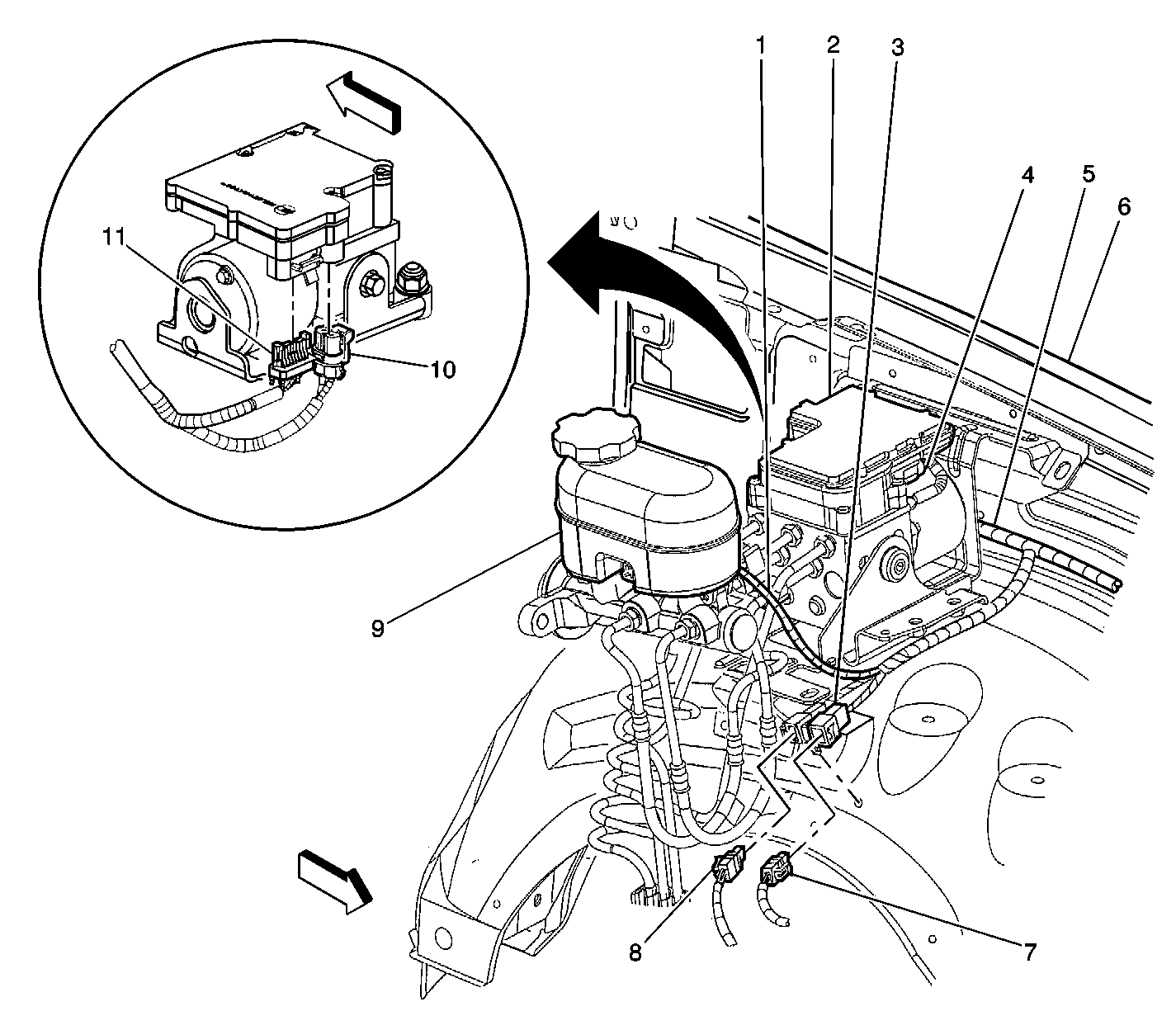Electro-Hydraulic Control Unit
The Electro-Hydraulic Control Unit (EHCU) is located in the left hand
side of the engine compartment. The EHCU assembly includes the Electronic
Brake Control module (EBCM) and the Brake Pressure Modulator Valve (BPMV).
The EHCU regulates hydraulic pressure in the brake system during an antilock
stop.
325 ABS or 310 ABS
During model year 2000, the four-door utilities can be equipped with
either a 325 ABS or 310 ABS. This is only due to production limitations of
the new 325 ABS. While both ABSs are functionally the same, the 325 ABS
differs from the 310 ABS in size and appearance. The main differences of
the 325 ABSs are:
| • | Cover is gray in color (instead of black like the 310 ABS system) |
| • | Smaller size and weight |
| • | Has fewer electrical connectors (3 vs 4) |
| • | Tube adapters are not used |
| • | Combination valve not mounted to BPMV |
Refer to
Electronic Brake Control Module (EBCM)

Electronic Brake Control Module
The Electronic Brake Control Module (EBCM) is part of the EHCU. The
EBCM is the electronic portion of the EHCU. The major function of the EBCM
is to control the BPMV. Inputs to the EBCM include the following
items:
| • | Three wheel speed sensors |
| • | Differential pressure (310 ABS) |
| • | Brake fluid level switch (325 ABS) |
| • | Ignition switch voltage |
Outputs of the EBCM include the following items:
| • | Three isolation solenoids (internal to the EHCU) |
| • | Three dump solenoids (internal to the EHCU) |
| • | The amber ABS indicator lamp (via a class 2 message) |
| • | The red BRAKE warning lamp (via a class 2 message) |
A class 2 serial data line is also used for diagnostic service tools
and assembly plant testing.
The EBCM monitors the speed of each wheel. If any wheel approaches lockup,
the EBCM controls the solenoids (isolation solenoid and dump solenoid) in
order to reduce brake pressure to the wheel approaching lockup. Once
the wheel regains traction, brake pressure is increased until the
wheel again approaches lockup. This cycle repeats until either the
vehicle comes to a stop, the brake is released, or the wheel is no
longer approaching lockup. The EBCM also runs self diagnostics in
order to check for any system malfunctions. If the EBCM detects a malfunction
with the system, the EBCM will illuminate the amber ABS indicator
in order to alert the driver of the malfunction.
Brake Pressure Modulator Valve
The Brake Pressure Modulator Valve (BPMV) is part of the EHCU. The BPMV
is the hydraulic portion of the EHCU. The EBCM controls the BPMV. The BPMV
is split into the following three hydraulic channels:
Each channel has an isolation valve and a dump valve. The front channels
share a low pressure accumulator, attenuator, and a pump. The rear channel
shares use of the pump, but uses it's own low pressure accumulator
and attenuator.
Wheel Speed Sensors
The front Wheel Speed Sensors (WSS) are a magnetic coil/pickup type.
Each WSS produces an AC voltage signal which is transmitted to the
EBCM in order to indicate how fast the wheel is turning. The frequency
and amplitude of the voltage signal is directly proportional to the
speed of the wheel.

